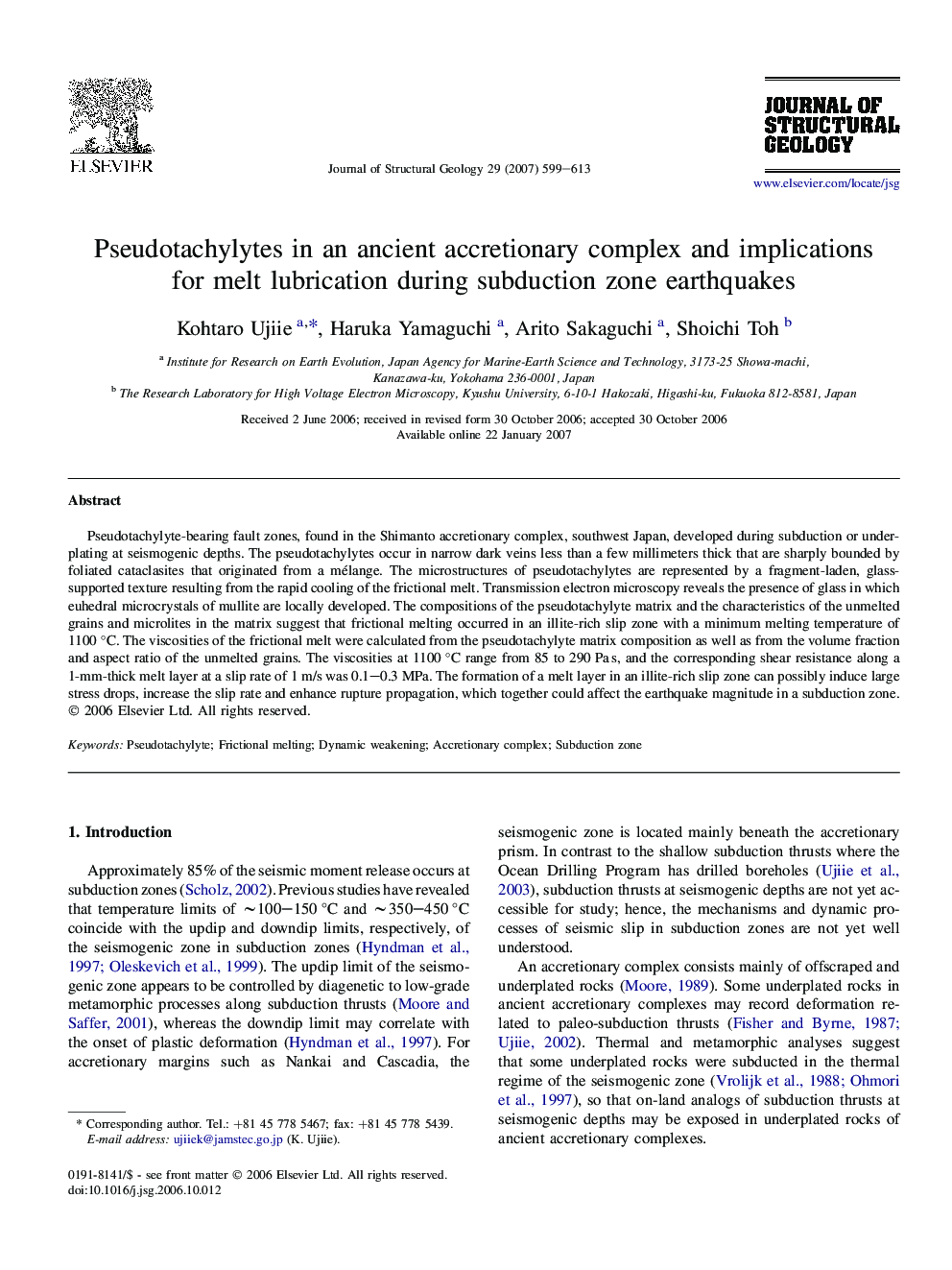| Article ID | Journal | Published Year | Pages | File Type |
|---|---|---|---|---|
| 4734404 | Journal of Structural Geology | 2007 | 15 Pages |
Pseudotachylyte-bearing fault zones, found in the Shimanto accretionary complex, southwest Japan, developed during subduction or underplating at seismogenic depths. The pseudotachylytes occur in narrow dark veins less than a few millimeters thick that are sharply bounded by foliated cataclasites that originated from a mélange. The microstructures of pseudotachylytes are represented by a fragment-laden, glass-supported texture resulting from the rapid cooling of the frictional melt. Transmission electron microscopy reveals the presence of glass in which euhedral microcrystals of mullite are locally developed. The compositions of the pseudotachylyte matrix and the characteristics of the unmelted grains and microlites in the matrix suggest that frictional melting occurred in an illite-rich slip zone with a minimum melting temperature of 1100 °C. The viscosities of the frictional melt were calculated from the pseudotachylyte matrix composition as well as from the volume fraction and aspect ratio of the unmelted grains. The viscosities at 1100 °C range from 85 to 290 Pa s, and the corresponding shear resistance along a 1-mm-thick melt layer at a slip rate of 1 m/s was 0.1–0.3 MPa. The formation of a melt layer in an illite-rich slip zone can possibly induce large stress drops, increase the slip rate and enhance rupture propagation, which together could affect the earthquake magnitude in a subduction zone.
